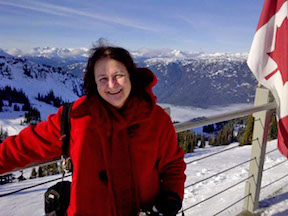(reprinted in the Norton Anthology of Theory and Criticism, 1374-1387)
- What complex of assumptions is meant by “the intentional fallacy”?
- What are some implications of the view that “the design or intention of the author is neither available nor desirable as a standard for judging the success of a work of literary art”? (1374-75)
- With which of Wimsatt and Beardsley’s views would Boris Eichenbaum have agreed? How is their focus different from that of the Russian formalists?
- What do they argue is the difficulty of inferring an author’s “intention” from examining the work? (if poem succeeded, intention was to create poem 1375) Do you agree?
- What are some reasons Wimsatt and Beardsley may have focused on the study of poetry whereas Eichenbaum and the other Russian Formalists were also concered with prose fiction? Are there features of prose fiction and non-fiction prose which would seem to suggest a concern with intention?
- What does it mean to say that “a poem should not mean but be”? (1375) Which aspects of its context are removed from the poem itself? (what is irrelevant has been excluded, 1375)
- By contrast, do practical messages have an “intention”? (1375) What does it mean to say that they are more abstract than poetry?
- Why should we refer to the speaker of a poem/literary work, rather than to the writer him/herself? (1376) Is this a practice which is now followed? How may this terminology affect the questions asked about the text?
- According to Wimsatt and Beardsley, can an author revise his/her original “intention”? (1376) Why or why not?
- In what sense may a poem/work of art be said to be a public document? (reflects variations “from a standard experience,” reflect “a system of norms” 1376) Why would this need to be said at all?
- On what grounds does he disagree with Ananda Coomaraswamy’s claim that we should examine whether a work has achieved its intentions (an aesthetic judgment), and whether it should have been undertaken at all (a moral one)? (1376-77)
- What do Wimsatt and Beardsley mean in their claim that “the intentional fallacy is a romantic one”? (1377, citations from Goethe and Croce)
- What place is given to historical criticism in a study of the author’s original viewpoint? (1377-78) To what forms of criticism do they believe this will most likely lead?
- Might there be other justifications for studying the social and publication context of a text in addition to a concern with its author’s intentions?
- For what errors do they take to task aesthetic pronouncements by Bernard Bosanquet, I. A. Richards and Allen Tate? (1378) What do they think of “sincerity” as a criterion of judgment? Which elements of their criticism seem to move toward other forms of evaluation?
- What do Wimsatt and Beardsley believe is inadequate about the literary criticism of poets themselves? (1376) Do you recognize any of the authors they are quoting? (poetry should come as naturally as leaves to a tree, that it is emotion recollected in tranquillity, 137)
- Why do you think they choose Housman’s self-description as a poet inspired by beer as representative of the account of poetry offered by poets? (1379-80) What is the use of such accounts? (to help poets, 1380)
- What do they infer from the claim that “the critical tendency dried up the poetry in Arnold and perhaps in Coleridge”? (1380, “judgment of poems is different fro mthe art of producing them”)
- Do they forsee a unification of the intentional and formalist views of critcism? (1380) Do you think this is possible? Has it happened to some degree?
- What is added to the essay by its ironic tone? Its firmness in making distinctions?
- What three categories of internal and external evidence for evaluating a work of literature do they posit? (1381 internal evidence of language, external evidence of diaries, journals, etc., meaning of words as used by that author)
- How may the second kind of evidence be viewed both biographically (intentionally) and historically? (1381) What basic types of critics does he distinguish?
- Are there other reasons which they do not mention why a search for authorial intention might be misleading?
- On what grounds does this essay criticize/make fun of John Livingston Lowes’ The Road to Xanadu (1930)? What principle do the authors extract from their perception that “it would seem to pertain little to the poem to know that Coleridge had read Bartram”? (1382)
- Might someone agree with Wimsatt and Beardsley’s basic views and yet find a meaning in source, image and genre studies?
- What seems to be at issue in their discussion of earlier critics’ use of science to elucidate John Donne’s poem “A Valediction: Forbidding Mourning”? What do they feel these critics have neglected? What kinds of evidence should be first considered, in their view? (1384)
- How do they respond to the search for “allusions” in modern poetry? (1384-85) Would this have been an important issue in 1946?
- What do they think of the practice of appending notes to a poem? Which famous modern poem would have prompted this concern? (1384-85) How should these notes be judged? (1386)
- Of what fault does he accuse such poets? (1386)
- How should we solve issues of whether a literary allusion exists in the mind of the character or the poet? (1387) Would the answer be resolved by asking a living author his/her opinion?
- Does this essay provide valuable insights? Or what grounds might it be/has it been criticized?
- How might viewpoints on issues of intention and allusiveness have had practical implications for the practice of pedagogy and scholarship?
